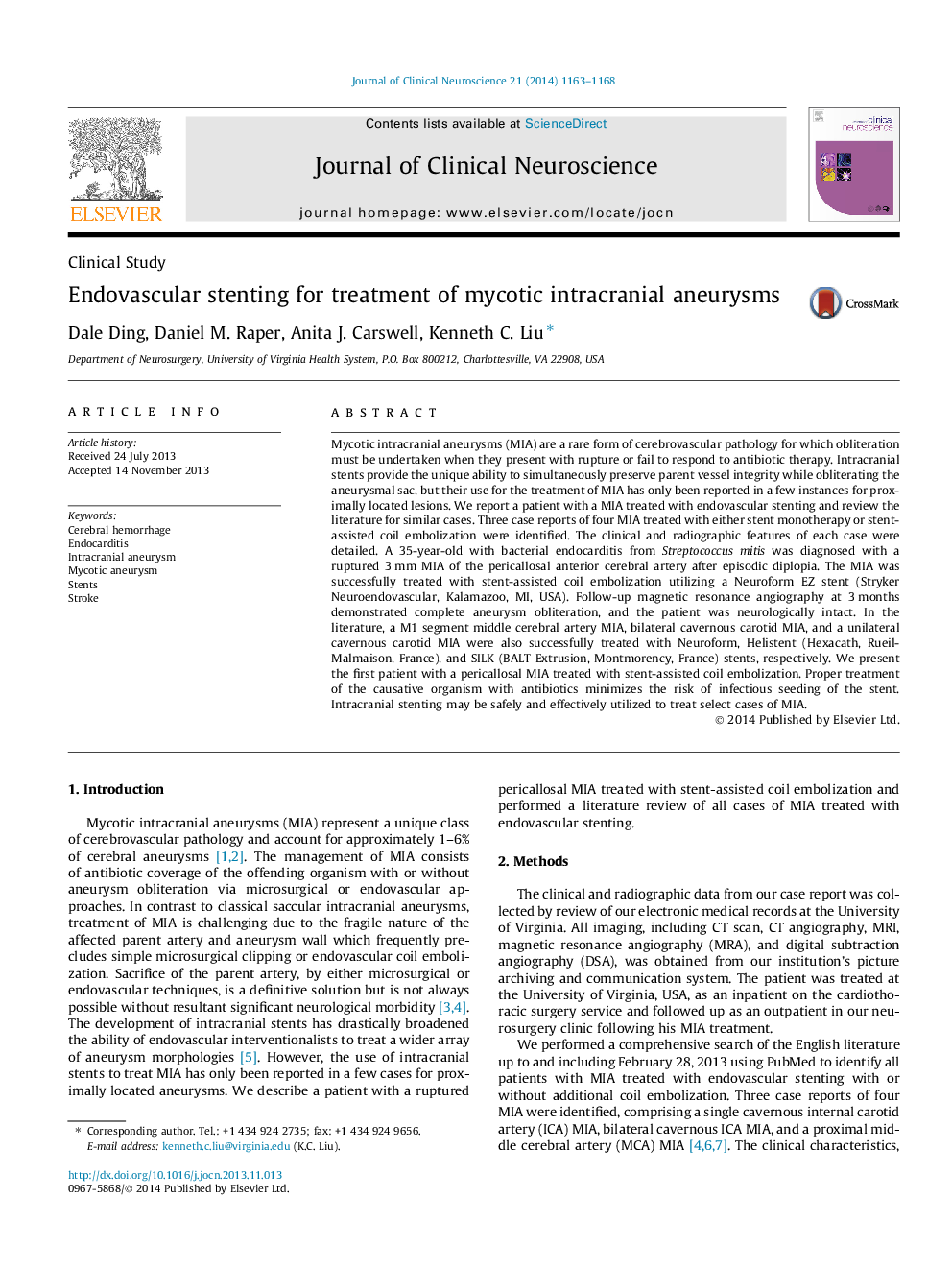| Article ID | Journal | Published Year | Pages | File Type |
|---|---|---|---|---|
| 6019763 | Journal of Clinical Neuroscience | 2014 | 6 Pages |
Abstract
Mycotic intracranial aneurysms (MIA) are a rare form of cerebrovascular pathology for which obliteration must be undertaken when they present with rupture or fail to respond to antibiotic therapy. Intracranial stents provide the unique ability to simultaneously preserve parent vessel integrity while obliterating the aneurysmal sac, but their use for the treatment of MIA has only been reported in a few instances for proximally located lesions. We report a patient with a MIA treated with endovascular stenting and review the literature for similar cases. Three case reports of four MIA treated with either stent monotherapy or stent-assisted coil embolization were identified. The clinical and radiographic features of each case were detailed. A 35-year-old with bacterial endocarditis from Streptococcus mitis was diagnosed with a ruptured 3Â mm MIA of the pericallosal anterior cerebral artery after episodic diplopia. The MIA was successfully treated with stent-assisted coil embolization utilizing a Neuroform EZ stent (Stryker Neuroendovascular, Kalamazoo, MI, USA). Follow-up magnetic resonance angiography at 3Â months demonstrated complete aneurysm obliteration, and the patient was neurologically intact. In the literature, a M1 segment middle cerebral artery MIA, bilateral cavernous carotid MIA, and a unilateral cavernous carotid MIA were also successfully treated with Neuroform, Helistent (Hexacath, Rueil-Malmaison, France), and SILK (BALT Extrusion, Montmorency, France) stents, respectively. We present the first patient with a pericallosal MIA treated with stent-assisted coil embolization. Proper treatment of the causative organism with antibiotics minimizes the risk of infectious seeding of the stent. Intracranial stenting may be safely and effectively utilized to treat select cases of MIA.
Related Topics
Life Sciences
Neuroscience
Neurology
Authors
Dale Ding, Daniel M. Raper, Anita J. Carswell, Kenneth C. Liu,
